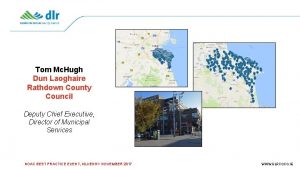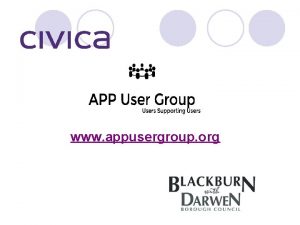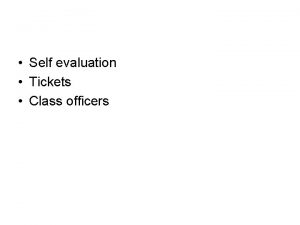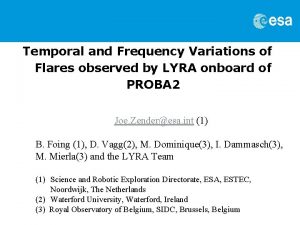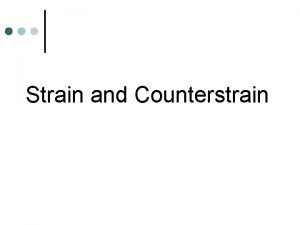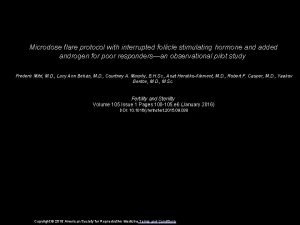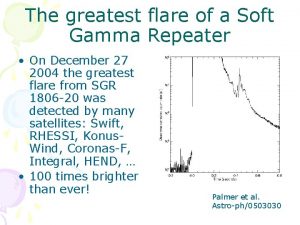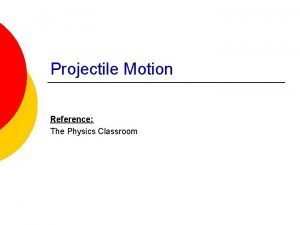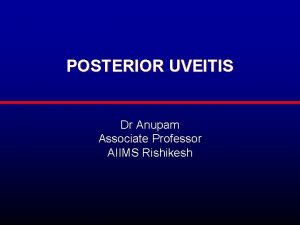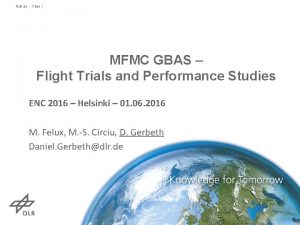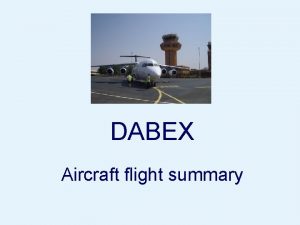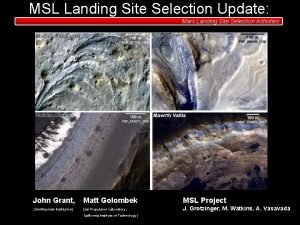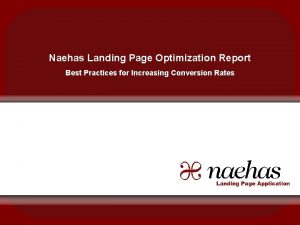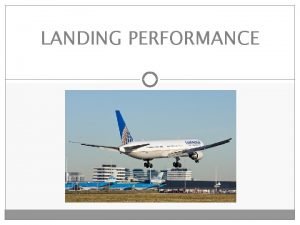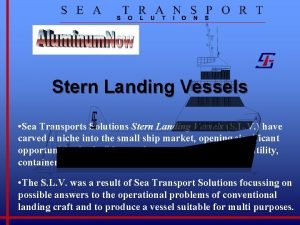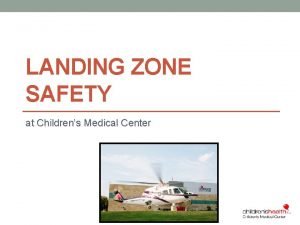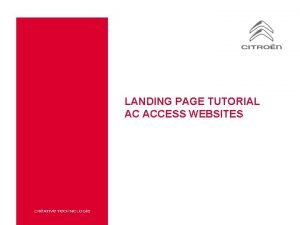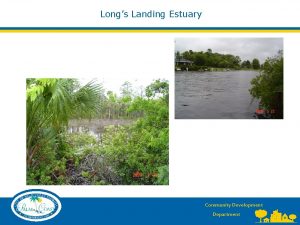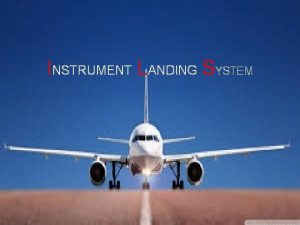DLR de Chart 1 HumanintheLoop Landing Flare Flight
























- Slides: 24

DLR. de • Chart 1 Human-in-the-Loop Landing Flare Flight Test Simulation of the Space. Liner Orbiter Frank Morlang

DLR. de • Chart 2 Overview • Motivation • Methodology • Results • Discussion & Outlook

DLR. de • Chart 3 Motivation • Now • Future (Who knows when ? )

DLR. de • Chart 4 Methodology Human-in-the-Loop Simulation for Space Traffic integration test purposes ! Use Case: DLR Space. Liner concept

DLR. de • Chart 5 Methodology Design drawings + CFD results X-Plane flight simulation model

DLR. de • Chart 6 Methodology + (CAC)1 & PAN AIR 2 model experiments’ results X-Plane flight simulation model 1 Software developed by DLR Institute of Space Systems, Dep. Space Launcher System Analysis 2 Software developed by BOEING

DLR. de • Chart 7 Methodology

DLR. de • Chart 8 Results (flight model)

DLR. de • Chart 9 Results (flight model)

DLR. de • Chart 10 Results (flight model)

DLR. de • Chart 11 Results (simulated whole descent)

DLR. de • Chart 12 Results (simulated whole descent)

DLR. de • Chart 13 Results (simulated whole descent)

DLR. de • Chart 14 Results (simulated whole descent)

DLR. de • Chart 15 Results (simulated landing flare test) • Initial altitude setting of 14000 ftagl • Autopilot pitch mode speed with pitch setting of 250 kts • Gear extraction at 10000 ftagl • Flare out at 1200 ftagl with autopilot pitch mode vertical speed of 0 feet per minute

DLR. de • Chart 16 Results (simulated landing flare test)

DLR. de • Chart 17 Results (simulated landing flare test)

DLR. de • Chart 18 Results (simulated landing flare test)

DLR. de • Chart 19 Results (simulated landing flare test)

DLR. de • Chart 20 Discussion & Outlook • Similar whole descent decline X-Plane / TOSCA with a steep, a nearly time constant and flat decrease phase

DLR. de • Chart 21 Discussion & Outlook • Although compressible flow effects are considered using Prandtl-Glauert, the Space. Liner X-Plane simulation model needs deeper investigation in its transonic and supersonic behavior, taking into account that transonic effects in X-Plane only refer to an empirical mach-divergent drag increase and the airfoil becomes an appropriate thickness ratio diamond shape under supersonic conditions.

DLR. de • Chart 22 Discussion & Outlook • Smooth approach and landing with: • About 1200 ftagl flare out initiation • About 200 kts IAS • Final approach at about 250 kts • lift-to-drag ratio keeps above the acceptable value of 3. 01 1 P. M. Sforza, Manned Spacecraft Design Principles, 1 st ed. , Elsevier Aerospace Engineering Series, Elsevier, November 2015, pp. 175 -176.

DLR. de • Chart 23 Discussion & Outlook • BUT • wing loading peak of 4200 N / m 2 exceeded the typical maximum values of the F-104 (mod), the X-15 and the Space Shuttle in the range of 3500 to 3800 N / m 21 1 P. M. Sforza, Manned Spacecraft Design Principles, 1 st ed. , Elsevier Aerospace Engineering Series, Elsevier, November 2015, pp. 175 -176.

DLR. de • Chart 24 Discussion & Outlook • Further simulated landing flare flight tests with smoother elevator actuator dynamics for target pitch mode vertical speed of 0 feet per minute and flare out initiation above 1200 ftagl are needed to find a setting not exceeding a wing loading peak 3800 N / m 2.
 Counter bevel in dentistry
Counter bevel in dentistry Tom mchugh dlr
Tom mchugh dlr Dlr
Dlr Dlr
Dlr Fight flight freeze fawn quiz
Fight flight freeze fawn quiz Civica flare
Civica flare Focus flare design thinking
Focus flare design thinking Coronal flaring in endodontics
Coronal flaring in endodontics Supposing a snowmobile is equipped with a flare
Supposing a snowmobile is equipped with a flare Difference between inlay and amalgam
Difference between inlay and amalgam Avaya
Avaya Temporal flare
Temporal flare Anterior rib counterstrain
Anterior rib counterstrain Microdose flare protocol
Microdose flare protocol Projection welding symbol
Projection welding symbol Joint geometry
Joint geometry Gamma flare
Gamma flare Bloom and lens flare
Bloom and lens flare Aqueous flare
Aqueous flare The physics classroom projectile motion
The physics classroom projectile motion Purulent uveitis
Purulent uveitis Eye ridge
Eye ridge Onlay skirt
Onlay skirt Occlusio pupillae definition
Occlusio pupillae definition Slicing flare
Slicing flare

